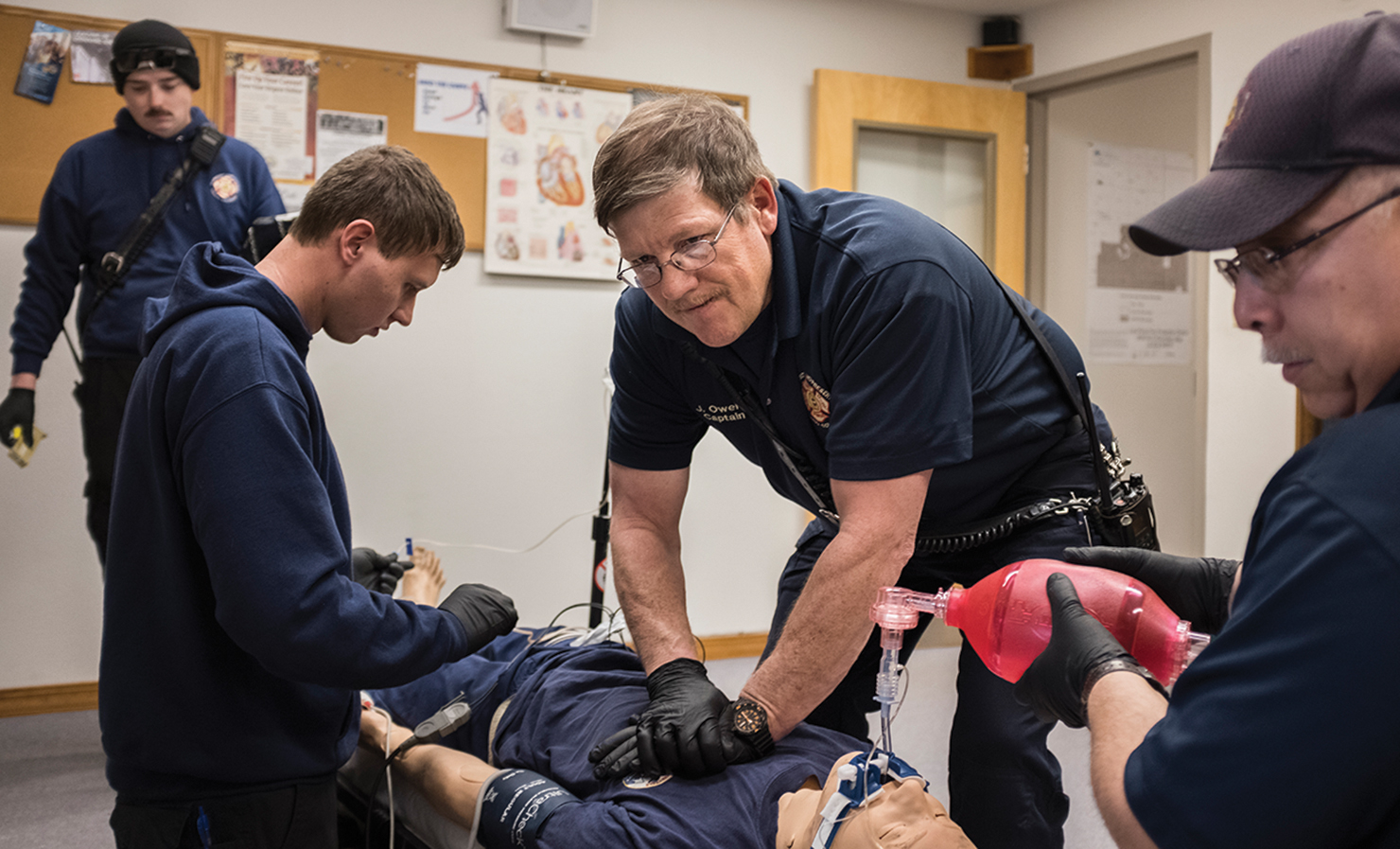In a statewide statistic for Colorado, emergency call volume is up 30 percent, while budget cuts equal 25 percent or more. Since 2013 there has been a distinct trend in decreasing revenues, with increasing cost. Locally, the Los Pinos Fire District went from 49 employees in rotation to just 23. The last time that the Fire District’s operating budget was increased was in 1998, when the mill levy was increased to 3.52.
“What level of service does the public expect?” asks Greg Childress, Los Pinos Fire District Division Chief. “Our question to the public is what can we do to meet that expectation.”
On Monday, March 2, Los Pinos Fire District will hold a board meeting at 7p.m. which is open to the public. They intend to answer those questions.
“We are trying to manage the future,” Childress emphasized.
Los Pinos has had an average of 1000 calls per year since 2016. “Less then 20 percent of what we do falls into firefighting,” Childress explained. “The bulk of what we do in today’s services is medical — EMS makes up 68 percent.”
This equates to the perfect storm, as income revenue from real estate taxes is suppressed statewide as a result of the Gallagher Amendment (enacted in 1982), and the cost of service continues to rise. The Los Pinos Fire District is able to provide the current level of service simply because the lack of funds in their yearly budget is being offset by using capitol funds, or savings, in their overall budget. That capitol is projected to run out in approximately three years’ time.
Los Pinos Fire District has zero debt, which is advantageous to its efforts.
The Fire District currently holds an ISO 5 rating, which is based on the services it can provide. That in turn directly reflects the cost of insurance for both businesses and residential assets in the immediate area. Simply put, if there is outstanding response time and available emergency services — the risk factors are perceived as much lower by insurance companies. The cost saving on insurance rates within the community easily balances out the potential tax increase needed to maintain a fully staffed fire station meeting the established guidelines congruent to the higher rating. If the rating gets dropped by any number of points, insurance premiums for homeowners and business go up.
The Ignacio station receives an average of 2-3 calls per day, most of which are EMT service based, rather than firefighting. Response time is critical. “When you’re in the middle of an emergency — [perceived] time takes forever,” Childress emphasized.
The Los Pinos District currently operates an Advanced Life Support (ALS) ambulance, which is required to have a trained Paramedic on board, in addition to better equipment and medications. Surrounding districts, such as Durango, Pagosa Springs and Bayfield also operate ALS level ambulance services. The alternative is a BLS or Basic Life Support level ambulance. Depending on the nature of the emergency, the services provided by ALS could easily mean saving one’s life — especially in a rural community where hospitals are located in far flung neighboring communities.
Wildland [firefighting] has become a huge situation in our community,” Los Pinos Fire Chief Tony Harwig explained. “we have a wildland crew, we hire five people each summer. Then they are hired out [for national deployment].” This method is used all across the country and enables fire departments to cover the payroll when regional fires are not the priority, sharing resources with each other as needed.
Training costs have also risen for most rural fire districts since each crew must maintain proficiency across a variety of disciplines ranging from, medicine and hazmat to structure fires and wildland fire fighting.
If the Los Pinos Fire District was to lose funding for current levels of service, one option is to go back to an all-volunteer fire department. If voters go to the polls and approve a mill levy increase, the vision is that the District can maintain career firefighters, and build a hybrid solution using a volunteer force to cover those additional needs, including basic staffing. With fully staffed fire stations, response time is quicker. “The bar is perfection. Paid or unpaid,” Harwig emphasized.
“The spirit of volunteerism is not dead. It is alive and well. It’s just that the world around it has changed; we occupy our time, everyone has busy schedules,” noted Childress.
The Fire District would still need seed money to train volunteer firefighters, but instead of pursuing a full 250-hour all-encompassing program, Los Pinos hopes to “specialize,” enabling volunteers to take on one or two aspects of the total training and break it down into manageable time commitments. “We have the trucks and the stations. We need the people,” Harwig said.
Los Pinos is in a unique situation apart from other rural districts in the state of Colorado; they serve a mix of Tribal land, Forest Service land and the Ignacio School District, which all fall into a tax exempt status — therefore the district relies heavily on the funding that comes from residential and commercial land to support its services.
Los Pinos feels confident that if the taxpayers vote for a mill levy increase to support the Fire District, then the existing services will continue with the help of volunteers to sustain a hybrid model — working alongside career firefighters and staff — to serve the community as a whole in the best way possible.
“We should be able to handle two emergency calls [at the same time] without calling for help — that’s just being a responsible organization,” Childress stated. “We can’t go back to an all-volunteer station and still run EMS with Paramedics. The tax increase is a direct reflection of service.”
Call the Los Pinos Fire District with questions at 970-563-9501. Website: www. lospinosfire.com




